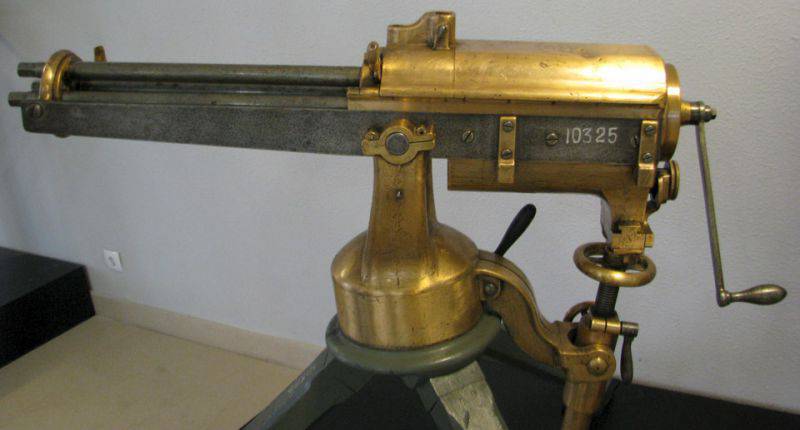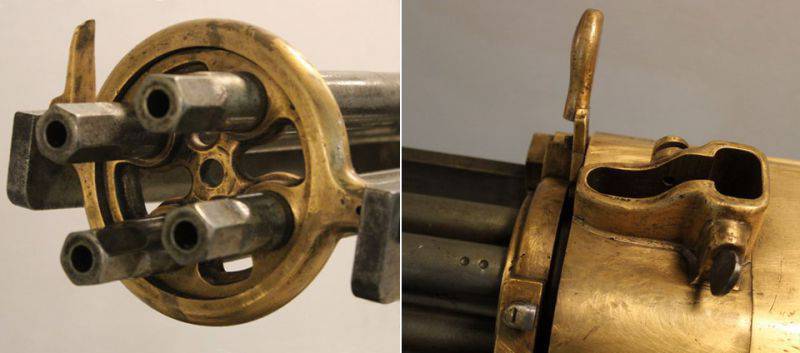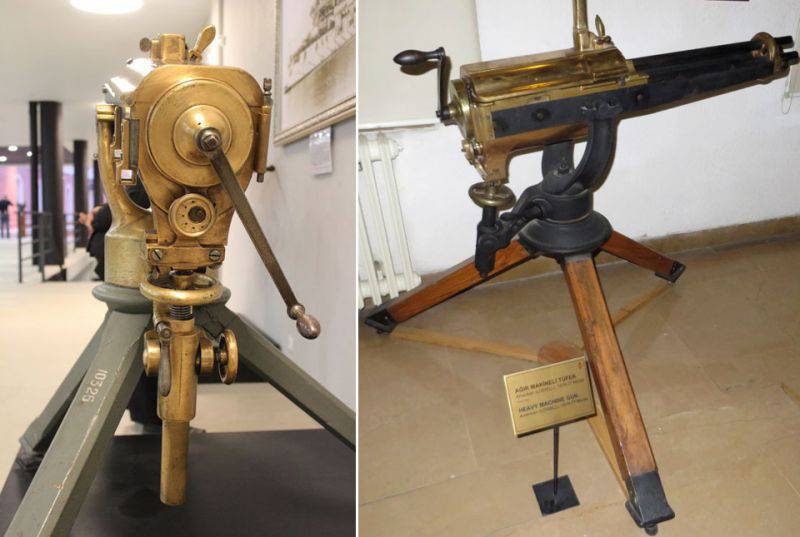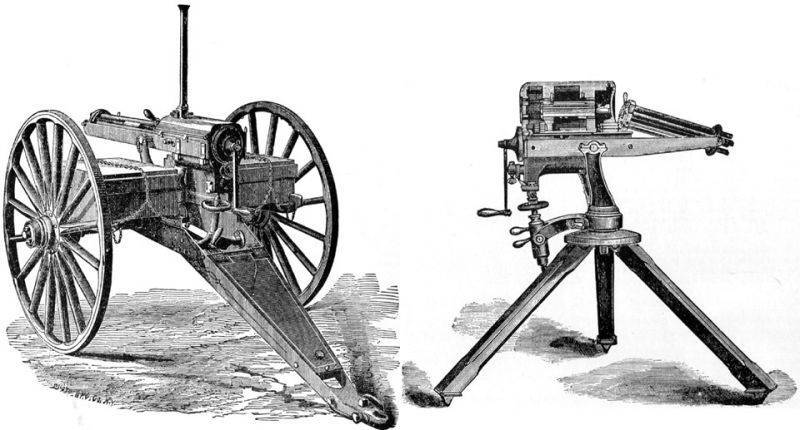Mitralezy Skobeleva
However, it is hardly known to many that these were not widespread in many countries Gatling, Gardner or Nordenfelt mitraleses, but much more rare, one might even say unique tools developed by DeWitt Clinton Farrington and not used in battles anywhere except in Russia. Moreover, Russia was the only country in the world to adopt this system.
Farrington, who worked at the Lowell Manyufechchuring Company, an armory in Massachusetts (which is why his development is sometimes called the Lowell system), set out to create the simplest, cheapest, reliable, and trouble-free Mitraleise, superior in all these parameters to the well-known revolving speed switch Gatling And I must say that he succeeded.
Farrington's Mithralesa looks like Gatling and has four trunks located around a horizontal axis. However, the external similarity hides a fundamental constructive difference: the barrels of Farrington guns do not rotate when fired, and the fire is fired only from one. And only after it is heated, the shooter turns the block with the lever, putting the cold one in place of the heated-up barrel. In fact, Farrington's Mithralea was a single-barrel instrument with quick-change trunks. So without any cooling systems, the problem of overheating was solved. weapons when shooting, the rate of which with the rapid rotation of the handle could reach 400 shots per minute.
Mitraleza tests were conducted on the naval artillery range in Annapolis, Maryland, on September 30 of the year 1876. In order to demonstrate the ease of operation of his weapon, Farrington suggested testing it to people who had never dealt with mitraliases. Employees of the landfill invited two Negro laborers, who, after a brief briefing, were able to independently disassemble the case, assemble it, charge it and open fire.
The reliability of the weapon was proved by the fact that during the tests of mitraliasis within five hours it fired 24 thousand shots, while there were only 10 delays, the elimination of which took 10 to 20 seconds. Nevertheless, the Navy refused to take it into service, citing the fact that he was completely satisfied with the Gatling. Perhaps this was due to the fact that the command fleet had an “informal” relationship with Richard Gatling and his company.
Lowell was able to sell only four mitraleses in the United States, three of which were bought by the California prison department, and another by the Cincinnati City Police Department. Attempts to enter the international market turned out to be not much more successful: Turkey bought a few pieces for acquaintance and the Russian Empire bought 20 copies - this was the only more or less large order.
We have "Farrington", installed on light tripod carriages, used as amphibious assault guns, however, the only Akhal-Teke expedition was the only episode of their combat use. There, they performed very well in repelling the massive attacks of the Turkmen cavalry 7 July and 28 December 1880 of the year, as well as 4 January 1881 of the year.
It is interesting that not a single “Farrington” has survived to this day in the States. They can be seen only in the Central Naval Museum of St. Petersburg and in the Istanbul Museum of Turkish Armed Forces.
A well-preserved specimen of Farrrington mitraleza in the St. Petersburg Naval Museum.
The block of mitraliez trunks in a bronze sliding bearing and the receiver of a vertical magazine on 30 cartridges, in front of which the barrel turning lever is visible.
On the left - the reloading handle and the vertical pickup mechanism of the "Petersburg" mitraleza, on the right - the same as the mitraillea in the Istanbul Military Museum.
On the left is Farrington's Mitraleleza on an artillery wheeled carriage with a connected magazine. On the right - mitraleza with an open bolt-case, which when cleaning / disassembling the weapon was reclined to the left on the hinge, while the breech block of the barrel rose up.




Information